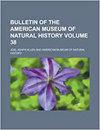标题秘鲁北部和厄瓜多尔南部灰齿鼠(啮齿目:蟋蟀科:灰齿鼠科)的系统订正及3新种描述
IF 3.4
2区 环境科学与生态学
Q1 BIODIVERSITY CONSERVATION
Bulletin of the American Museum of Natural History
Pub Date : 2023-06-21
DOI:10.1206/0003-0090.461.1.1
引用次数: 0
摘要
摘要:灰腹托马菌(Thomasomys cinereus)是托马菌科托马菌属的模式种。据目前所知,托马索mys包括48个物种,所有这些物种都是热带安第斯山脉潮湿山地或前山地森林的特有物种。尽管有人认为灰蝶是一个复杂的物种,但这一假设尚待严格评估。在此,我们提供了一个基于外部、颅骨和软形态特征的定性评估的物种修订;形态计量分析;基于细胞色素b基因序列的系统发育分析;物种划界方法;以及对打字材料的第一手检查。我们对遗传数据的分析在T.cinereus中找到了四个不同的分支,其中一个对应于T.cinereos senso-stricto(仅限于秘鲁卡哈马卡省的Río Marañón、RíoHuancabana和Río-Tablachaca界定的山地森林)和三个新物种:Thomasomys lojapiuranus,sp.nov.,来自秘鲁皮乌拉省和洛亚省的山地森林,厄瓜多尔;T.shallqukucha,sp.nov.,局限于秘鲁兰巴耶克省的Kañaris山地森林;和T.pagaibambensis,sp.nov.,限制在秘鲁卡哈马卡省的Pagaibamba山地森林中。这些物种可以通过头骨、齿列、下颌骨、胃、腭皱和龟头的几个离散形态特征来区分。这些分类群之间的遗传距离在细胞色素b基因座为5.06%-7.65%,基于细胞色素b序列数据的划界分析支持它们被识别为不同的物种。我们的研究结果表明,在秘鲁北部的安第斯山脉中存在着以前从未被怀疑的扩散屏障,他们证实了Río Marañón是一个巨大的屏障,限制了托马索米和其他sigmodontine啮齿类动物的分布。本文章由计算机程序翻译,如有差异,请以英文原文为准。
Systematic Revision of Thomasomys cinereus (Rodentia: Cricetidae: Sigmodontinae) from Northern Peru and Southern Ecuador, With Descriptions of Three New Species
ABSTRACT Thomasomys cinereus is the type species of Thomasomys, type genus of the sigmodontine tribe Thomasomyini. As currently recognized, Thomasomys includes 48 species, all of which are endemic to humid montane or premontane forests in the tropical Andes. Although it has been suggested that T. cinereus is a species complex, this hypothesis has yet to be critically evaluated. Herein we provide a revision of the species based on a qualitative assessment of external, craniodental, and soft morphological traits; morphometric analyses; a phylogenetic analysis based on cytochrome b gene sequences; species delimitation methods; and first-hand examination of type material. Our analyses of genetic data recovered four distinct clades within T. cinereus, one corresponding to T. cinereus sensu stricto (restricted to the montane forests delimited by the Río Marañón, Río Huancabamba, and Río Tablachaca in Cajamarca department, Peru) and three new species: Thomasomys lojapiuranus, sp. nov., from the montane forests of Piura department, Peru, and Loja province, Ecuador; T. shallqukucha, sp. nov., restricted to the Kañaris montane forests in the Peruvian department of Lambayeque; and T. pagaibambensis, sp. nov., restricted to the montane forests of Pagaibamba in Cajamarca department, Peru. These species can be distinguished by several discrete morphological traits of the skull, dentition, mandible, stomach, palatal rugae, and glans penis. Genetic distances among these taxa range from 5.06%–7.65% at the cytochrome b locus, and delimitation analyses based on cytochrome b sequence data support their recognition as distinct species. Our results suggest the existence of previously unsuspected dispersal barriers in the Andes of northern Peru, and they confirm that the Río Marañón is a formidable barrier that limits the distribution of species of Thomasomys as well as other sigmodontine rodents.
求助全文
通过发布文献求助,成功后即可免费获取论文全文。
去求助
来源期刊
CiteScore
7.90
自引率
2.90%
发文量
4
审稿时长
>18 weeks
期刊介绍:
The Bulletin, published continuously since 1881, consists of longer monographic volumes in the field of natural sciences relating to zoology, paleontology, and geology. Current numbers are published at irregular intervals. The Bulletin was originally a place to publish short papers, while longer works appeared in the Memoirs. However, in the 1920s, the Memoirs ceased and the Bulletin series began publishing longer papers. A new series, the Novitates, published short papers describing new forms.

 求助内容:
求助内容: 应助结果提醒方式:
应助结果提醒方式:


